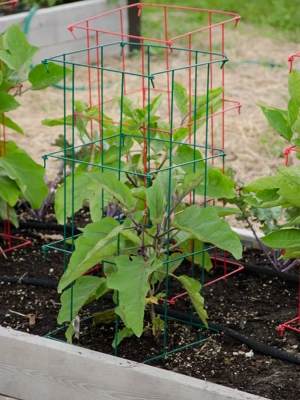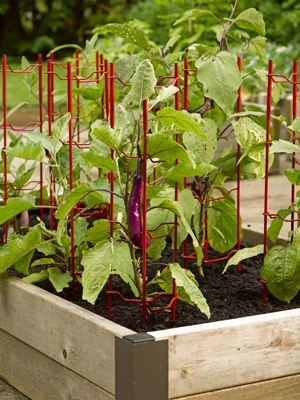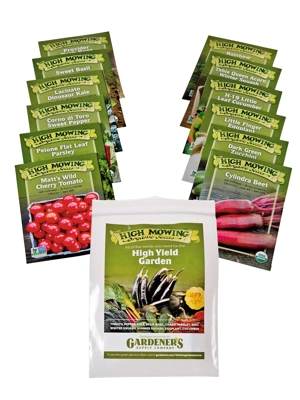Peppers (hot)

Hot peppers like it hot. They are native to Mexico where the climate is warm, sunny and dry almost all year-round. The more you can replicate these growing conditions, the more successful you'll be at producing a good crop of hot peppers. In cool, cloudy climates, peppers thrive in a greenhouse. You can also try growing them in pots which helps increase the soil temperature and lets you move the plants around to follow the sun.
Start hot peppers indoors 12 weeks before the last spring frost. Heat mats will speed germination, which is very slow in temperatures below 80 degrees F. Transplant outside after the soil has reached 60 degrees and all danger of frost has passed.
If you give your hot peppers fertilizer you will get lots of leaves but not many peppers. Wood ashes, granite dust or Azomite (a manufactured rock powder), can be scratched into the soil around the peppers in midsummer to stimulate more fruit production. Don't be too generous with the water. It's best to keep the soil on the dry side.
Peppers are congenial. They like to be with other peppers, so plant them close together — 12 inches apart. When the plants are at maturity, their leaves should be touching their neighbor's. Peppers are insect-pollinated, so if you grow more than one variety and save the seeds, you can't depend on getting exactly the same hot pepper next year. New hybrids may be interesting, but beware: a pepper that looks like a jalapeno might have the heat of a habanero.
The heat of hot peppers is measured in Scoville units, named for the Wilbur Scoville, an Englishman who measured heat in peppers in the early 1900s. Read the seed catalogs carefully before buying seed. There is a huge difference between the heat of a Hungarian wax pepper (relatively mild at 500 Scoville units) and cayenne peppers at 5,000 or habanero peppers at 250,000! Note the days to maturity, and select varieties that are suited to your climate. In cooler areas, time to maturity may be longer than what the seed catalog predicts.
Picked young, hot peppers are not so hot. When allowed to fully ripen, they become hotter. A stressed pepper will also be hotter than one that has had plenty of water and some fertilizer. If you can make yourself do it, picking off the first few peppers when they are the size of a dime will stimulate more abundant production later. Very hot peppers are best dried and ground, so you can use just a tiny portion. Wear rubber gloves when preparing hot peppers. The oils can cause your skin to burn for days.
Other than aphids and spider mites, pests are rarely a problem with peppers. You can help protect them from damage and keep the plants extra cozy by using garden fabric (row covers). Be sure to remove the covers once the plants begin to flower so beneficial insects can have access to the blossoms for pollination.
Last updated: 01/28/2021
Print this Article:
Related items
Get the Dirt
Stay up to date on new articles and advice. Please fill out the information below.







